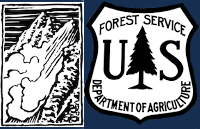20-21
We visited the Throne in the northern Bridgers on 12/26/20. There is a base of weak, sugary facets below snow that fell today and earlier this week. Photo: GNFAC
Forecast link: GNFAC Avalanche Forecast for Sun Dec 27, 2020
GNFAC Avalanche Forecast for Sat Dec 26, 2020
<p>Yesterday a skier triggered a large avalanche on the Football Field path of Saddle Peak, immediately south of Bridger Bowl’s boundary. He was luckily not caught or injured. We are very thankful for his timely report to us and ski patrol to ensure everyone was ok (<strong><a href="https://www.mtavalanche.com/node/23396">photos and details</a></strong>). The avalanche broke 1-2 feet deep on a layer of very weak, sugary facets on the ground. This layer is some of the weakest snow we have seen in years, and it exists in the Bridger Range, Hyalite, Big Sky, Taylor Fork and West Yellowstone (and everywhere in-between).</p>
<p>Recent activity is a sign that this weak snow at the ground is struggling to support additional weight. Yesterday in Hyalite a skier triggered a large collapse on a low angle slope (<strong><a href="https://www.mtavalanche.com/node/23404">details</a></strong>). On Thursday I saw natural avalanche crowns on Bridger Peak (<a href="https://www.mtavalanche.com/images/20/natural-avalanches-bridger-peak">…;). Last weekend, Dave and I saw avalanches and weak facets in Taylor Fork (<a href="https://youtu.be/IUb9ub26y1o"><strong>video</strong></a>), and he and Doug triggered a couple avalanches at Lionhead (<strong><u><a href="https://www.mtavalanche.com/node/23324">details and video</a></u></strong>). Careful terrain selection is your best defense against this problem. Avoid slopes steeper than 30 degrees all together, or carefully assess the snowpack and minimize exposure to terrain traps to reduce the consequences of a slide.</p>
<p>Today it is possible to trigger avalanches breaking on sugary persistent weak layers 1-3 feet deep. Snow and wind will form fresh slabs that could make avalanches easier to trigger. Be extra cautious of wind loaded slopes, and anticipate stability to decrease where snowfall today is heavy. The avalanche danger is MODERATE.</p>
<p>In the mountains near Cooke City the snowpack is 4-6 feet deep with a stronger foundation than the rest of our advisory area. Our primary avalanche concern is the 2 feet of snow (2.2” <a href="https://www.nrcs.usda.gov/wps/portal/nrcs/detail/or/snow/?cid=nrcs142p2… water equivalent</a>) that fell earlier in the week, and slopes where it is drifted into thick slabs.</p>
<p>During the storm on Tuesday and Wednesday there were natural avalanches and a skier triggered avalanche on steep, wind-loaded slopes (<a href="https://youtu.be/bHZazXX4EXM"><strong>video</strong></a>, <a href="https://youtu.be/Ava7FSUx9kY"><strong>video</strong></a>, <strong><a href="https://www.mtavalanche.com/node/23352">details</a></strong>). The last couple days skiers reported collapsing of the snowpack in low angle terrain which is a sign the recent snow can still avalanche on steep slopes. Today avalanches are possible to trigger and the avalanche danger is MODERATE. Avoid steep, wind-loaded slopes and carefully assess the stability of the recent snow before riding slopes steeper than 30 degrees.</p>
<p>If you get out, please send us your observations no matter how brief. You can submit them via our <a href="https://www.mtavalanche.com/node/add/snow_observation"><strong>website<…;, email (<a href="mailto:mtavalanche@gmail.com"><strong>mtavalanche@gmail.com</strong></a…;), phone (406-587-6984), or Instagram (#gnfacobs).</p>
Upcoming Avalanche Education and Events
See our education calendar for an up to date list of all local classes. Here are a few select upcoming events and opportunities to check out:
From obs: "Beautiful blue bird up the Republic Creek drainage skiing woody ridge. Noticed what appeared to be a natural from last cycle although I did notice a skin track headed up that way." Photo: J. Baker
Large collapse at Maid of the Mist
From email: "At approximately 8600", east of Maid of the Mist Creek, I started skinning from the tree edge slightly into the north-east facing meadow. Immediately after leaving tree-line, I heard a large "whump" and noticed a faint crack that shot far into the meadow (I could only see it for 20-30 feet it was so faint, and did not show up in my photo, but it is likely it went farther from how loud the collapse was). We decided to turn around there and carefully re-traced our tracks back into the safety of the dense forest and descend back to our cars that route."
